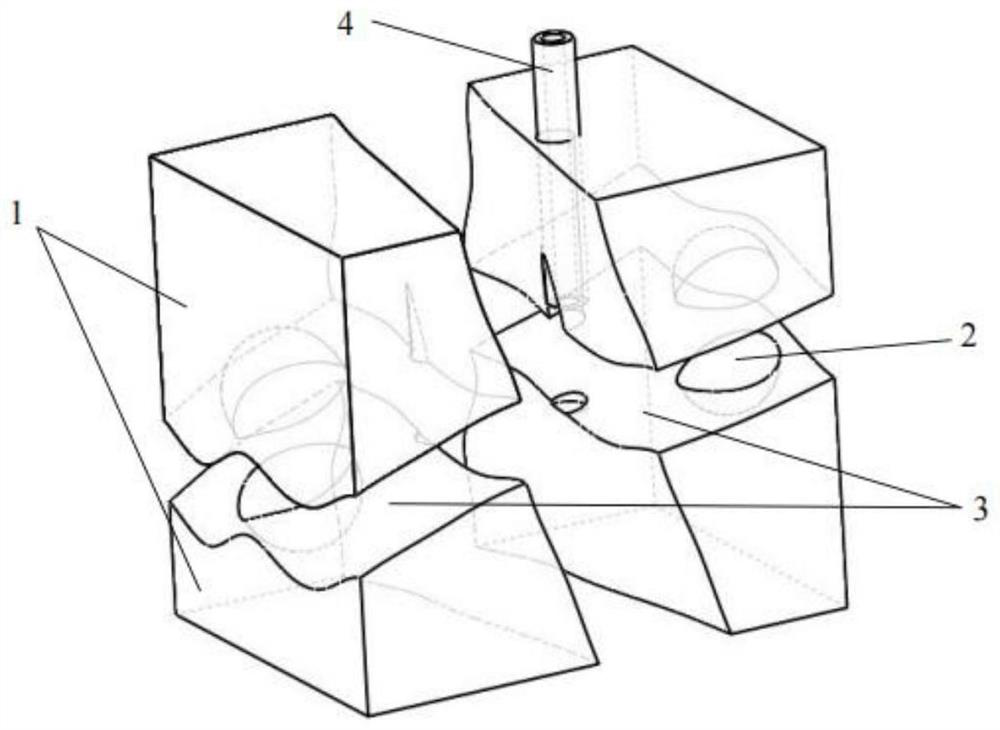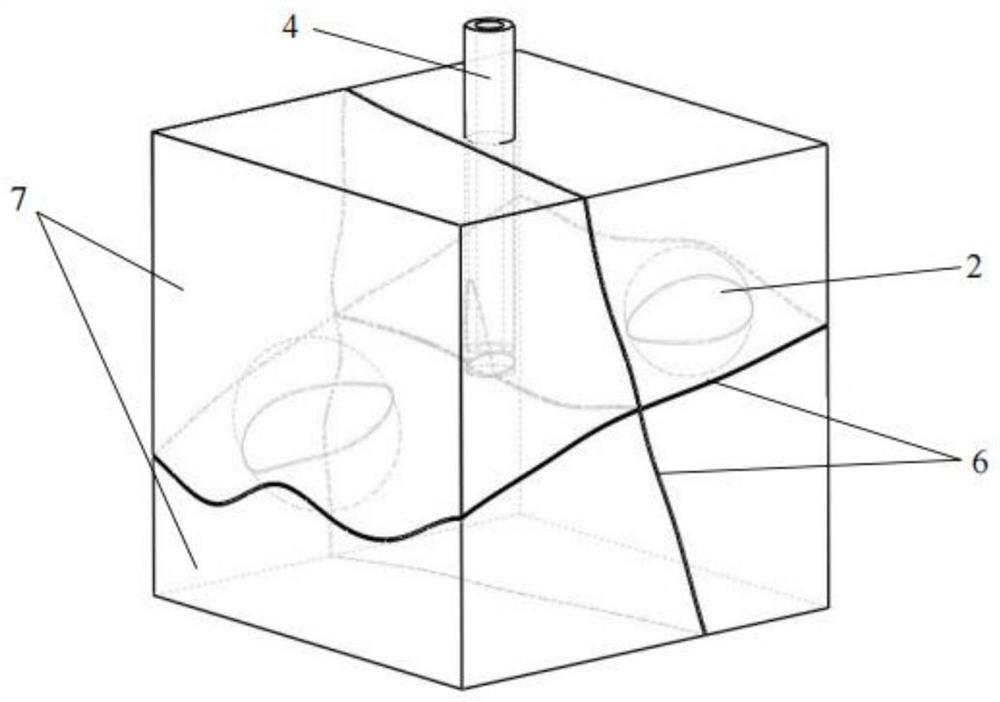Acid fracturing test method for fracture-vug type carbonate rock test piece
A carbonate rock, acid fracturing technology, applied in the direction of applying stable tension/pressure to test material strength, measuring devices, instruments, etc., can solve problems that limit the research progress of carbonate rock acid fracturing tests
- Summary
- Abstract
- Description
- Claims
- Application Information
AI Technical Summary
Problems solved by technology
Method used
Image
Examples
Embodiment 1
[0132] Such as Figure 2-4, in the embodiment of the present application, the regular-shaped carbonate rock block is divided into several smaller segmented blocks 1 by means of splitting, and holes are drilled or partially knocked on the segmented plane 3 of the segmented block 1. Chisel to make artificial hole 2, so as to simulate hydrochloric acid rock salt cave. The multiple split blocks 1 are rejoined and fixed according to the initial position, and the resulting spliced cracks 5 simulate natural cracks, and the gaps of the remaining spliced cracks 5 are filled with slaked lime slurry to form a crack filling layer 6 mainly composed of CaCO2. formed a complete splicing of fracture-vuggy carbonate rocks. Place the fracture-cavity carbonate rock splicing body in the center of the mold, and form the cement outer shell 7 by pouring cement slurry into the remaining space of the mold, and cure for more than 7 days to form the test piece. After the cement outer shell 7 is so...
Embodiment 2
[0134] Such as Figure 5-7 , in the embodiment of the present application, the regular-shaped carbonate rock block is divided into several smaller segmented blocks 1 by means of plane cutting, and holes are drilled or partially knocked on the segmented plane 3 of the segmented block 1. Chisel to make artificial hole 2, so as to simulate hydrochloric acid rock salt cave. The multiple split blocks 1 are rejoined and fixed according to the initial position, and the resulting spliced cracks 5 simulate natural cracks, and the gaps of the remaining spliced cracks 5 are filled with slaked lime slurry to form a crack filling layer 6 mainly composed of CaCO2. formed a complete splicing of fracture-vuggy carbonate rocks. Place the fracture-cavity carbonate rock splicing body in the center of the mold, and form the cement outer shell 7 by pouring cement slurry into the remaining space of the mold, and cure for more than 7 days to form the test piece. After the cement outer shell 7 ...
PUM
 Login to View More
Login to View More Abstract
Description
Claims
Application Information
 Login to View More
Login to View More - R&D
- Intellectual Property
- Life Sciences
- Materials
- Tech Scout
- Unparalleled Data Quality
- Higher Quality Content
- 60% Fewer Hallucinations
Browse by: Latest US Patents, China's latest patents, Technical Efficacy Thesaurus, Application Domain, Technology Topic, Popular Technical Reports.
© 2025 PatSnap. All rights reserved.Legal|Privacy policy|Modern Slavery Act Transparency Statement|Sitemap|About US| Contact US: help@patsnap.com



